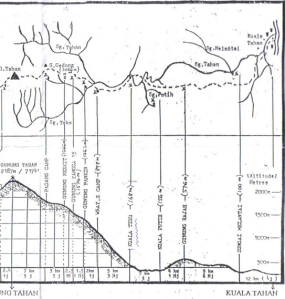I promised a long time ago to post on the findings of studies on the risks of sidewalk versus on-road bicycling. From a 1994 paper by Wachtel and Lewiston studying bicycle-motor vehicle collisions in Palo Alto:
The average cyclist in this study incurs a risk on the sidewalk 1.8 times as great as on the roadway, and the result is statistically significant (p<0.01)…. Altogether the sidewalk risk is higher for 24 of the 27 categories [of cyclists], and for six of tehse the difference is statistically significant; for many groups the number of accidents expected is too small to attain significance.
The greatest risk found in this study is for bicyclists over 18 traveling against traffic on the sidewalk. Each of these characteristics is hazardous in itself; combined, they present 5.3 times the average risk.
Table 5 demonstrates that sidewalks or paths adjacent to a roadway are usually not, as non-cyclists expect, safer than the road, but much less safe. This conclusion is already well established in existing standards for bikeway design, although in our experience it is not widely known or observed.
[…]
Table 4 shows that wrong-way sidewalk travel is 4.5 times as dangerous as right-way sidewalk travel. Moreover, both Table 4 and Table 5 show that sidewalk bicycling promotes wrong-way travel: 315 of 971 sidewalk bicyclists (32 percent) rode against the direction of traffic, compared to only 108 of 2005 roadway bicyclists (5 percent).
Even right-way sidewalk bicyclists can cross driveways and enter intersections at high speed, and they may enter from an unexpected position and direction — for instance, on the right side of overtaking right-turning traffic. Sidewalk bicyclists are more likely than roadway bicyclists to be obscured at intersections by parked cars, buildings, fences, and shrubbery; their stopping distance is much greater than a pedestrian’s, and they have less maneuverability.
There is some nuance in the statistics. In reality, looking at all groups of bicyclists together, the rate of accidents (what the authors call ‘risk’) is higher for roadway bicyclists than for sidewalk bicyclists. But when cyclists are separated demographically by age, sex, and by whether they were cycling with or against traffic, for most such categories, it was riskier to cycle on the sidewalk than on the road. The reason for this apparent paradox is that higher risk is correlated with age, and age is correlated with cycling on the roadway. This meant that the large number of older cyclists on the roadways skewed the risk factor for roadway cycling higher than it actually was. If you compare cyclists in the same demographic category, though, roadway cycling was almost always less or equally dangerous.
(I would post the tables of data of all these studies if it wouldn’t run the risk of violating copyright laws. Nevertheless, those who want to see them may email me personally.)
Another study of cyclists in the Ottawa-Carleton region found a similar higher risk for sidewalk cycling:
Overall, travel on roads has the lowest injury and fall rates, followed by off-road paths/trails and then sidewalks. Collision rates are not different on the three types of facilities. The rate of injury might be considered most important by planners and cyclists from a safety perspective while the individual collision and fall rates might be considered important from the perspective of promoting bicycling if one wants to ensure positive travel experiences even when no injuries occur.
The relative rate of injury on the sidewalk versus the road is very high (4.0). Similarly, the relative
injury rate on sidewalk versus off-road paths/trails is quite high (2.5). While the relative rate of injury between paths/trails versus roads is lower ( 1.6) it is still significant and only seems small because of its magnitude compared to the other relative fall rates.consider the non-confounding and confounding variables.
Like the previous study, this one tried to eliminate the influence of confounding factors other than kind of path used. Instead of comparing risks category-by-category, though, they used other parts of their data to weight the risks they calculated accordingly.
Finally, a third study in Toronto finds that:
Overall, travel on roads has the lowest injury and fall rates, followed by off-road paths and then sidewalks. Collision rates are lower on sidewalks than on paths. But collision rates are higher on paths and sidewalks compared to roads. The relative rate of injuries and major injuries on the sidewalk versus both roads and paths is very high. While the relative rate of injury between paths versus roads is lower it is still significant for all injuries.
I should note that I did not cherry-pick these studies. I searched for studies that compared accident rates on the road versus accident rates on sidewalks, and did not find any that found a higher accident rate for road cyclists. You can try it yourself on Google Scholar.
Keep in mind, though, that even if road cycling has a lower risk of accident, a collision with a car is more likely to be fatal or result in serious injury than a fall on the sidewalk.
References:
Aultman-Hall, L. and F. L. Hall (1998, January). Ottawa-carleton commuter cyclist on- and off-road incident rates. Accident analysis and prevention 30 (1), 29-43.
Aultman-Hall, L. and G. M. Kaltenecker (1999, November). Toronto bicycle commuter safety rates. Accident Analysis & Prevention 31 (6), 675-686.
Wachtel, A. & Lewiston, D. Risk factors for bicycle-motor vehicle collisions at intersections. Journal of Safety Research 195.




Recent Comments